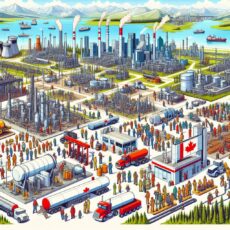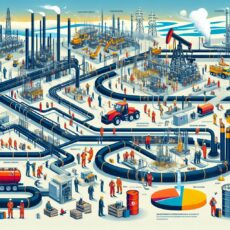Canada’s oil and gas industry is a labyrinth of complexity, intrigue, and innovation. From the sprawling tar sands of Alberta to the deep offshore wells of the East Coast, the sector is a multifaceted ecosystem that plays a crucial role in the country’s economy and energy security. But behind the veneer of prosperity lies a world shrouded in mystery and contradiction.
At the heart of this enigma is the constant push and pull between economic growth and environmental conservation. The extraction and production of oil and gas have fueled Canada’s economy for decades, providing jobs and wealth to countless communities across the country. However, this prosperity comes at a cost – the industry is one of the largest sources of greenhouse gas emissions in the country, contributing to Canada’s struggle to meet its climate change commitments.
The regulatory landscape surrounding the oil and gas industry is another facet of its perplexing nature. With a patchwork of federal, provincial, and Indigenous regulations governing the sector, navigating the legal framework can feel like solving a Rubik’s Cube blindfolded. From environmental assessments to pipeline approvals, every step of the industry’s operations is scrutinized and debated, often leading to heated conflicts between stakeholders with competing interests.
But perhaps the most confounding aspect of Canada’s oil and gas industry is the way in which it weaves itself into the fabric of Canadian identity. On one hand, the industry is a symbol of national pride, representing the pioneering spirit and resourcefulness of the country. On the other hand, it is a lightning rod for controversy and protest, with activists decrying its impact on the environment and Indigenous communities.
Despite these contradictions, one thing is clear – the oil and gas industry in Canada is here to stay, at least for the foreseeable future. As the world continues to rely on fossil fuels for its energy needs, the sector will remain a vital cog in the country’s economic machine. The challenge now is to find a way to balance the industry’s contributions to prosperity with its impacts on the environment and society.
In conclusion, Canada’s oil and gas industry is a fascinating enigma that defies easy categorization. It is a source of wealth and opportunity, as well as controversy and conflict. As the country grapples with the dual imperatives of economic growth and environmental sustainability, finding a path forward for the industry will require a delicate balancing act. Only time will tell whether Canada can unlock the secrets of this complex and elusive sector.


